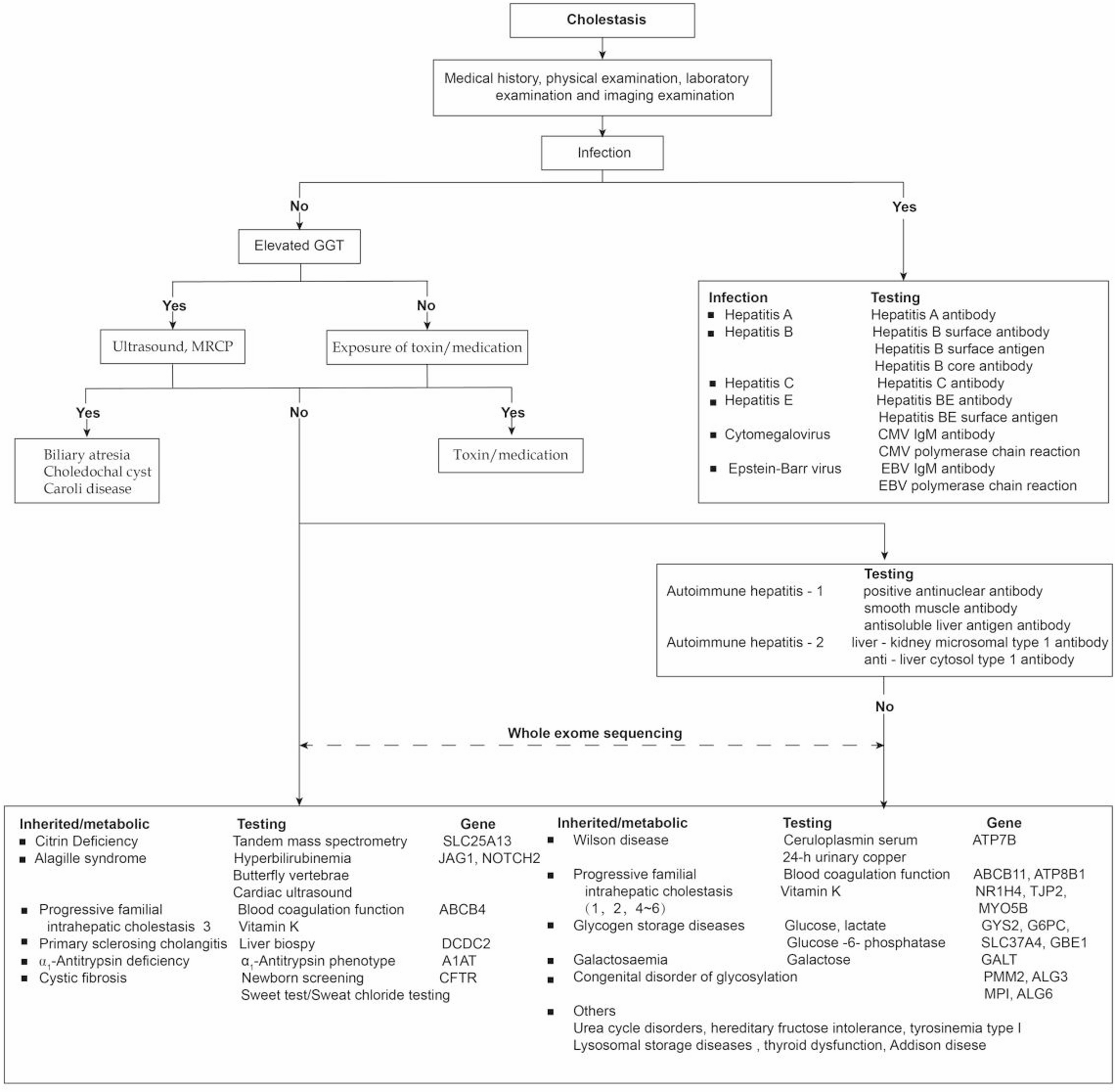Our study delineates the clinical, biochemical, and genetic spectrum of 15 NICCD patients, reinforcing key diagnostic hallmarks while revealing genotype-phenotype correlations. The universal presence of infant cholestasis, elevated ammonia (100%), and hyperlactatemia (93.3%), elevated methionine (93.3%), and citrulline (100%), aligns with prior reports [5, 20]. Genetic analysis revealed the predominant SLC25A13 c.851_854del variant (86.7%) with distinct genotype-phenotype correlations, particularly evidenced by threonine elevation in individuals who were compound heterozygous for c.851_854del/c.615 + 5G > A. And the therapeutic regimen incorporating MCT-based nutrition yielded favorable outcomes with rapid clinical resolution (median 32 days) and subsequent growth normalization, with the exception of a single compound heterozygous c.1399 C > T/c.1638_1660dup case displaying prolonged recovery. These findings collectively validate the established diagnostic triad of NICCD while emphasizing the effectiveness of current therapeutic strategies in managing this metabolic disorder.
Song and colleagues reported that lactate level increased in 80% NICCD patients and hyperammonemia over half of NICCD patients. Lin et al. [20] found elevated blood ammonia in all patients, which aligns with our study. Citrin deficiency leads to hyperammonemia primarily through impaired mitochondrial aspartate export, which is essential for urea cycle function. This pathogenic mechanism has been conclusively demonstrated in citrin/mGPD double-knockout mouse models [21]. The metabolic disturbances observed in citrin deficiency – characterized by elevated methionine, citrulline, threonine and tyrosine – arise from citrin’s crucial role in the malate-aspartate shuttle, where its deficiency impairs mitochondrial aspartate export and NADH redox balance, leading to disrupted urea cycle function that causes citrulline accumulation, while the blocked conversion of methionine and threonine to succinyl-CoA and inhibited TCA cycle metabolism of tyrosine collectively manifest this distinct amino acid profile [22]. These findings precisely explain why our study consistently detected elevated citrulline levels in symptomatic patients, while the variable newborn screening results may reflect differences in the timing of metabolic derangement onset or compensatory mechanisms during the neonatal period [23].
The most frequent mutations in Korea and Japan are IVS16ins3kb, c.851_854del, and IVS11 + 1G→A [9, 10]. A study on patients with CD combining newborn metabolic and genetic screening revealed that the most common SLC25A13 mutation was c.851_854del, with an allele frequency of 60%, followed by IVS16ins3kb [20]. Recent reports in China have shown that the occurrence is 1:45, reaching levels of 1:28 in Southern China [20]. And the most frequent mutation sites were 851-854del and IVS6 + 5G > A [3]. Our study showed that c.851_854del was the predominant mutation. The absence of IVS16ins3kb and IVS6 + 5G > A mutations in our study may be attributed to the limited intronic coverage of our WES methodology, which focused primarily on exonic regions. The c.851_854del frequency was significantly higher in southern than border and northern populations, wihch indicated the regional difference in the frequency of mutation [11,12,13]. The novel mutation c.762T > A (p.F254L) identified in this study has been not reported previously. It is classified as “likely pathogenic” (ACMG criteria: PM3_Strong [trans with pathogenic variant], PM2_Supporting [absent in controls], PP4 [phenotype match]) according to the American College of Medical Genetics and Genomics (ACMG) guidelines. This novel mutation in the role of CD needs to be validated furtherly. Homozygous c.851_854del(p.M284Pfs*2) patients showed the earliest symptom onset (median 3 days) and most severe cholestasis (100% jaundice/60% hepatomegaly), while individuals who were compound heterozygous for c.851_854del/c.615 + 5G > A presented later (median 13.5 days) with consistent threonine elevation, revealing genotype-phenotype correlations in NICCD. However, our small cohort size (n = 5 homozygous, n = 2 compound heterozygous) limits definitive conclusions, underscoring the need for multicenter studies to validate these preliminary associations between genetic variants and clinical/metabolic profiles.
All 15 patients achieved complete symptom resolution with lactose-free MCT formula (EléCare) and ursodeoxycholic acid therapy. However, similar to previous reports [17, 24], some patients exhibited persistent growth impairments. While other studies have documented hypoglycemia and liver failure in CD patients, these complications were not observed in our cohort, warranting further investigation with larger sample sizes and longer follow-up periods.
Our study provides a comprehensive analysis integrating clinical features, genetic profiles, and treatment outcomes in NICCD patients, with particular strength in correlating specific genotypes with distinct phenotypic and metabolic patterns, which offers clinically actionable insights for personalized management. However, the findings must be interpreted in light of the small sample size (n = 15) and relatively short follow-up period, which may limit the generalizability of some observations, such as the prolonged recovery time associated with rare variants (e.g., compound heterozygous c.1399 C > T/c.1638_1660dup). To address these limitations, future multicenter collaborations are needed to expand cohort diversity and sample size, complemented by mechanistic studies using citrin-deficient animal models to further elucidate genotype-specific disease mechanisms and therapeutic responses.
